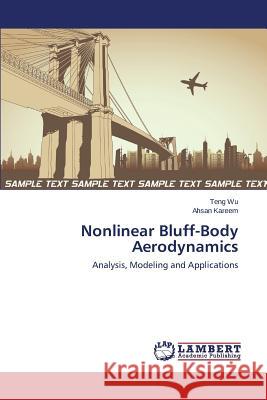Nonlinear Bluff-Body Aerodynamics » książka
Nonlinear Bluff-Body Aerodynamics
ISBN-13: 9783659107856 / Angielski / Miękka / 2014 / 524 str.
Wind induced effects on structures governed by the Navier-Stokes equations are not adequately represented by the conventional linear analysis framework. This shortcoming is becoming important for contemporary structures, as their increasing span-lengths and heights make them more sensitive to nonlinear and unsteady aerodynamic/aeroelastic load effects. To address this challenge this book focuses on responding to following key questions: (1) What are the typical nonlinear behaviors observed from wind tunnel studies and full-scale observations and their underlying physics? (2) What are the effects of nonlinearity and unsteadiness on bluff-body aerodynamics? (3) What is the ability of existing nonlinear models to capture nonlinear and unsteady effects? (4) Is it possible to go beyond the current nonlinear models, and establish more effective nonlinear unsteady low-dimensional modeling techniques?
Wind induced effects on structures governed by the Navier-Stokes equations are not adequately represented by the conventional linear analysis framework. This shortcoming is becoming important for contemporary structures, as their increasing span-lengths and heights make them more sensitive to nonlinear and unsteady aerodynamic/aeroelastic load effects. To address this challenge this book focuses on responding to following key questions: (1) What are the typical nonlinear behaviors observed from wind tunnel studies and full-scale observations and their underlying physics? (2) What are the effects of nonlinearity and unsteadiness on bluff-body aerodynamics? (3) What is the ability of existing nonlinear models to capture nonlinear and unsteady effects? (4) Is it possible to go beyond the current nonlinear models, and establish more effective nonlinear unsteady low-dimensional modeling techniques?











